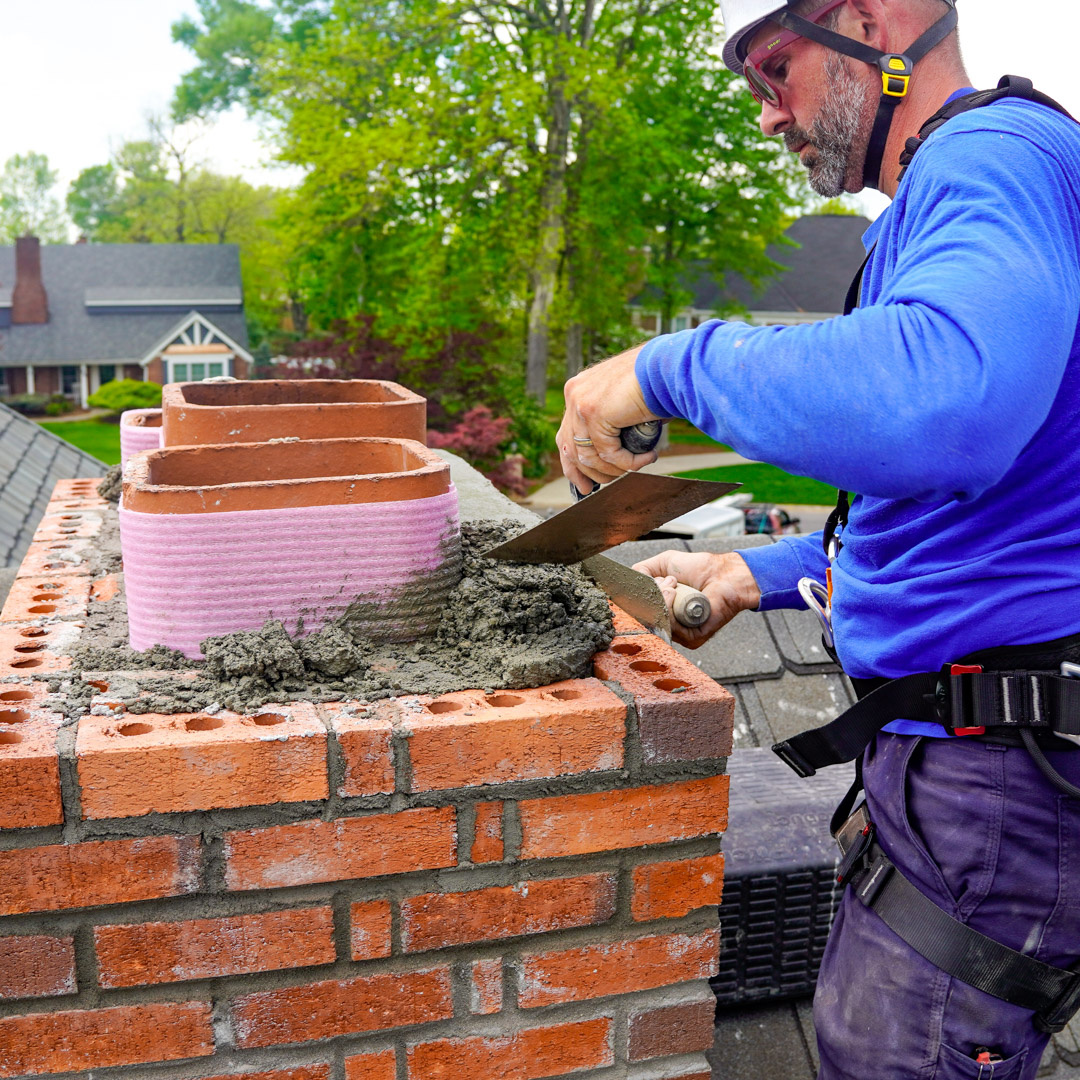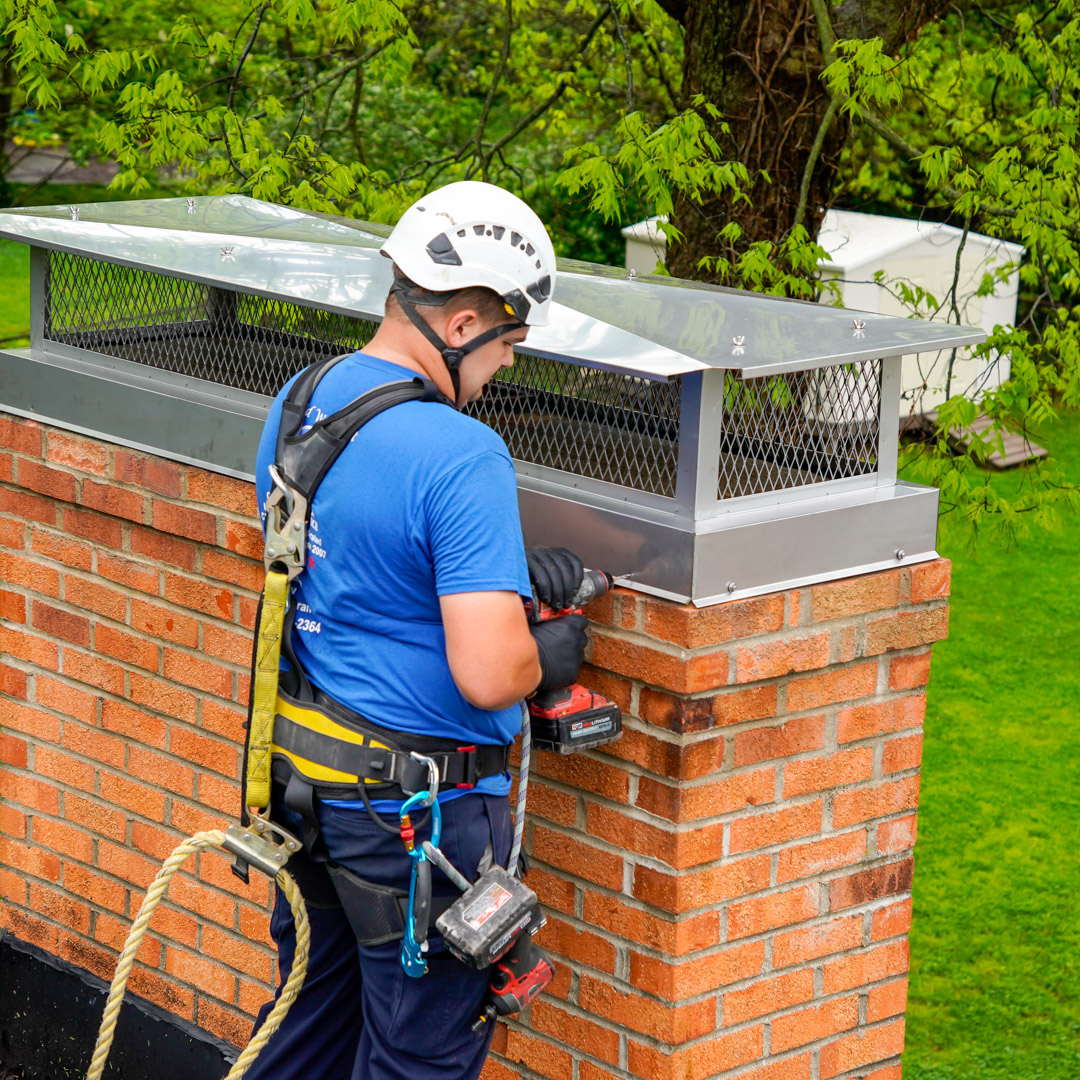The Many Ways a Chimney Crown Protects Your Chimney & Home
Because of their location, chimney crowns are rarely seen. Built as slabs across the tops of chimneys, they pretty much go unnoticed – until they become damaged and problems arise.
American Chimney & Fireplace of Louisville, KY, would like to tell you a little about how chimney crowns are made, what they do and when they need to be repaired.
 Chimney crown construction
Chimney crown construction
Most crowns are made of concrete that’s poured into place to form a solid cover over the entire top of a masonry chimney minus the flue opening.
When built correctly, crowns include an overhang, or drip edge, which keeps water from rain and melting snow from running right down the sides of the chimney masonry. Crowns should be designed with an angle that enhances water runoff.
The purposes of a chimney crown
Chimney crowns have two primary purposes:
1. To keep water out of interior spaces of the chimney
2. To keep water off the bricks beneath the crown
Let’s look closer at each purpose.
1. Keep water out of the chimney
When water is allowed to move into a chimney’s interior spaces, problems are bound to start. Examples:
- Water damage to the interior masonry
- Possible damage to the chimney liner
- Eventual damage to parts of the home adjacent to the chimney
- Dangerous mold growth in areas you can’t see
A big concern with this kind of water intrusion is that it’s not something that gets noticed right away. Over time, however, the damage caused by water in unseen areas of the chimney can become a serious safety and health risk for people living in the home.
2. Keep water off the bricks
The crown itself keeps water off the uppermost bricks of the chimney, and its angled design and drip edge encourage water to spill away from the chimney’s sides. Why all the worry about bricks and water?
Because masonry bricks are porous and naturally absorb water. They’re also prone to cracking, and water can easily move into the cracks.
Water is a deteriorating force. This is why so much of the work in the chimney repair and rebuilding industry is focused on water damage. Brick deterioration is an ongoing process: once it starts, it won’t reverse itself. If ignored, the result can be a leaning or collapsed chimney and many other problems along the way.
How to make sure your chimney crown is in good shape
Start by scheduling an inspection with a reputable local chimney service provider. Your technician will take a close look at the crown to see if there are any breaks, gaps, cracks or other signs of damage.
If damage is found, there are several ways to resolve it.

Small cracks can often be patched
But before patching, your inspector will want to know why the cracks happened. If it was because of inferior-grade concrete, patching won’t solve the problem long-term.
The crown can be rebuilt
Rebuilding a chimney crown involves removing the current crown and starting from scratch. When damage is extensive, rebuilding is the best solution.
Waterproof the crown
After the crown is repaired or rebuilt, a sealant can be applied to prevent future water intrusion.
Install a full-width chimney cap
A full-width chimney cap provides great protection for a crown. Made of metal, the cap completely covers the crown and keeps rain away from it.
Help for your chimney crown
If it’s time to have your chimney crown looked at, call American Chimney & Fireplace in Louisville, KY, to schedule an inspection. You can also reach us through our contact form.



